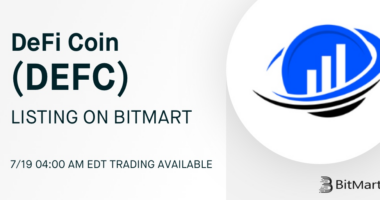A modest price target bump reveals deeper shifts in banking profitability that most investors are missing.
Rineplex senior financial analyst examines why U.S. Bancorp’s recent analyst upgrade signals more than just quarterly optimism. The story behind the numbers points to structural advantages that separate winners from survivors in regional banking.
The Numbers Behind the Noise
A recent decision to raise U.S. Bancorp’s price target from $49 to $54 on September 30 might seem like standard Wall Street fare. The firm maintained its “In Line” rating, suggesting cautious optimism rather than aggressive bullishness. But the timing reveals something more interesting about where regional banks stand heading into 2026.
The analyst’s note carried a telling caveat: while Q3 2025 trends look solid, the real earnings momentum won’t materialize until early next year. This lag matters because it suggests the market hasn’t fully priced in the operational improvements already showing up in the bank’s financials.
Fee Income: The Silent Revenue Revolution
Most people think of banks as institutions that make money primarily through lending. That model is evolving faster than many realize. U.S. Bancorp now generates roughly 42% of its total revenue from fee-based businesses. This shift fundamentally changes how the bank weathers economic cycles.
Q2 2025 demonstrated this diversification in action. Payment services revenue climbed alongside trust and investment management fees. Treasury management services added another growth layer. These aren’t one-time spikes but sticky revenue streams that don’t depend on interest rate movements or loan volume.
What Wide Moat Actually Means
Financial analysts throw around terms like “wide moat” without explaining why they matter to real money. For U.S. Bancorp, the moat comes from two concrete advantages: switching costs and cost efficiencies that competitors struggle to replicate.
Switching costs work like this: once businesses integrate their treasury management, payroll processing, and commercial banking with one institution, moving to another bank becomes expensive and risky. The operational disruption alone keeps clients locked in. Add in established relationships and integrated systems, and the barriers to exit become formidable.
Cost advantages stem from scale and technology investments made over the years. U.S. Bancorp operates one of the more efficient retail banking networks in the country. Smaller regional competitors can’t match the per-unit economics while larger money-center banks carry legacy costs that drag down margins.
The 2026 Inflection Point
Why won’t full earnings momentum arrive until early 2026? The answer lies in how banks recognize revenue improvements. Fee income growth takes time to compound, while expense reductions need several quarters to fully flow through earnings.
The bank achieved 250 basis points of positive operating leverage during Q2, adjusted for one-time items. That’s banker-speak for revenue growing faster than expenses. The 59.2% efficiency ratio confirms disciplined cost management without sacrificing growth investments.
Investors who wait for certainty typically buy after the easy gains are gone. The current setup offers a window where the operational improvements are visible but not yet fully reflected in share price appreciation.
Regional Banks vs. The Perception Problem
Regional banking stocks carry baggage from the 2023 crisis that wiped out several mid-sized institutions. The fear lingered even as stronger banks demonstrated resilient balance sheets. U.S. Bancorp weathered that storm without significant drama, yet the sector still trades at discounts to historical valuations.
This creates an odd dynamic where fundamentals improve while sentiment lags. The bank’s year-over-year top-line growth, combined with expense discipline, produced real operating leverage. Yet the stock trades as if these improvements are temporary rather than structural.
Where the Risk Actually Lives
No investment comes without trade-offs. For USB, the main risks aren’t the obvious ones about loan quality or deposit flight. The bank’s balance sheet can handle normal credit cycles without breaking a sweat.
The real vulnerability lies in execution risk around fee business growth and whether expense discipline holds as revenue expands. If the bank starts spending growth dollars inefficiently, the operating leverage story breaks down. If competitors figure out how to replicate the fee income model at scale, the moat narrows.
Neither scenario seems imminent, but both deserve monitoring. The bank’s management team has shown consistent execution over multiple cycles. That track record provides some confidence, but doesn’t eliminate the risk.
Beyond the Price Target
The $54 price target matters less than the underlying business momentum. Investors who focus solely on near-term price movements miss the structural story. U.S. Bancorp is building a different kind of regional bank where lending is important but not dominant.
Technology enables efficiency rather than just cutting costs. Multiple revenue streams provide stability that single-business-line banks can’t match. That transformation takes years, not quarters.
The Takeaway That Actually Matters
U.S. Bancorp’s story isn’t about dramatic turnarounds or explosive growth. It’s about steady operational improvements compounding over time. The recent price target increase acknowledges this reality without overpromising quick returns.
The bank’s fee income diversification provides downside protection while creating multiple paths for growth. The efficiency gains show management discipline that should persist across different economic environments. These qualities don’t make for exciting soundbites, but they make for solid portfolio holdings.





